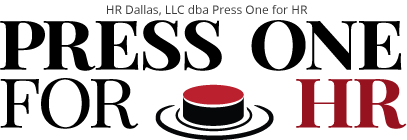Spoiler Alert. SuperShuttle drivers are independent contractors according to The National Labor Relations Board’s (NLRB) opinion issued on January 25, 2019. Effectively this opinion overturned the FedEx Home Delivery v. NLRB opinion from 2009.
For geeks like me, you can find the NLRB opinion here . And for additional light reading the FedEx opinion is found at 563 F.3d 492.
Independent Contractor v. Employee Test. In case you didn’t spend three years of your life in law school, perhaps slept since last reviewing the independent contractor test, or you are lucky enough not to live in the employment world walking the bending and twisting tightrope of interpreting a ten part test from 1947 to distinguish an employee from an independent contractor, here are the paraphrased common law factors (If you want to know how the factors became law, check out Taft Hartley Act of 1947, 1968 Supreme Court opinion, NLRB v. United Insurance Company of America, and the 1958 Restatement (Second) of Agency Section 220). And one final tidbit, this is not the same test utilized by the I.R.S.
- Employer Control. “The extent of control which, by the agreement, the master may exercise over the details of the work.”
- Distinct Occupation. “Whether or not the one employed is engaged in a distinct occupation or business.” The less distinct, the more likely the person is an employee.
- Micro-managed Supervision. “The kind of occupation, with reference to whether, in the locality, the work is usually done under the direction of the employer or by a specialist without supervision.”
- “The skill required in the particular occupation.” Note: I’m not sure I can appropriately distinguish this from “distinct occupation.”
- “Whether the employer or the workman supplies the instrumentalities, tools, and the place of work for the person doing the work.”
- “The length of time for which the person is employed.”
- “The method of payment, whether by the time or by the job.”
- Regular Work. “Whether or not the work is part of the regular business of the employer.”
- “Whether or not the parties believe they are creating the relation of master and servant.”
- In the Business. “Whether the principal is or is not in business.” Note: this really isn’t about bankruptcy.
You won’t be surprised to find that the cases interpreting this test through the years are numerous. The courts’ analysis in each case is what fascinates people like me, and what frustrates decent, normal business people trying to comply with government regulation. Admittedly, many people thought the FedEx opinion was a divergence from established law. So, perhaps we shouldn’t be surprised to find the board reversing course. Also not surprising is the significant dissenting opinion which was about the same length as the Board’s opinion.
The Facts in a Nutshell. SuperShuttle DFW has an interesting shared-ride business model. Their drivers were converted from employees to independent contractors in 2005. The business operating facts are at the core of the decision.
- Local SuperShuttle licenses from national company. SuperShuttle is a separate entity from SuperShuttle International and SuperShuttle Franchise Corporation. The DFW business licenses with the national companies to use the trademark, logo and proprietary administrative software.
- The administrative software drivers use provides dispatching, payment and reservation support. It is also the software used to bid for rides.
- Drivers are Franchisees. Drivers sign a one-year franchise agreement to operate independently. The franchisee drivers can hire other relief drivers to work for them, but drivers must be vetted and approved.
- Drivers Supply Equipment. Drivers purchase the shuttle vans, pay an initial franchise fee as well as a flat weekly fee to operate under the SuperShuttle name and license the required software.
- Government Contract. The franchisees operations are governed by the Airport Board. Things like customer complaints, vehicle condition, maintenance and inspection, and driver screening is covered under the SuperShuttle DFW’s contract with the Board. And, franchisees are required to comply.
- Franchise Agreement. The driver franchisees signed an agreement with SuperShuttle regarding operational details, and agree to pay weekly system fees from $300 to $575 depending on airport. This covers the software and the Nextel phone system provided by the company for each van owned/leased by the driver.
- The drivers set their schedules, choose however many rides they want to take. The weekly fee does not change based on revenue, and the drivers keep all their customer fares. Drivers must wear uniforms, and once committing to a ride, must meet ride timing SLAs. Drivers indemnify the company and pay for insurance provided by the company.
Conclusion. The Board did a great job summarizing their application of the Independent Contractor Doctrine at the end of the opinion to determine that SuperShuttle DFW’s drivers are correctly identified as independent contractors, and not employees. The Board noted the driver owned or leased the van which was the mainstay of their work. Drivers exercise “nearly complete control…over their daily work schedules and working conditions, and the method of payment,…” The franchisees “pay a monthly fee and keep all fares they collect.” The Board also pointed out that the shared-ride industry is an extension of the taxi-cab industry, and SuperShuttle had little supervision over the drivers.
The Gig Economy. For better or worse, the gig economy is in full swing. The Board’s opinion here appears to coincide with the increasing number of independent contractors in our midst. The reason for the surge in contractors is debatable. Is it because everyone has a little entrepreneurial spirit? Of, are other factors at play? Older workers having a difficult time finding jobs? Employers faced with increasing benefit costs, including PTO and healthcare, looking to decrease their operating costs? Maybe it’s employees seeking more flexibility in their daily lives to take care of children or parents? Whatever the reason, the SuperShuttle opinion will provide additional guidelines for determining the difference between an employee and an independent contractor. Although, as the past opinions prove, how the Board interprets the test in future cases is anyone’s guess.
When making decisions regarding whether people you work with are independent contractors or employees, seek professional advice from Human Resources and/or your Employment Attorney. This area of employment law, along with the decision of whether an employee is exempt or non-exempt, are expensive areas when mistakes are made.
Good luck!
LK Greer
HR Dallas, LLC

